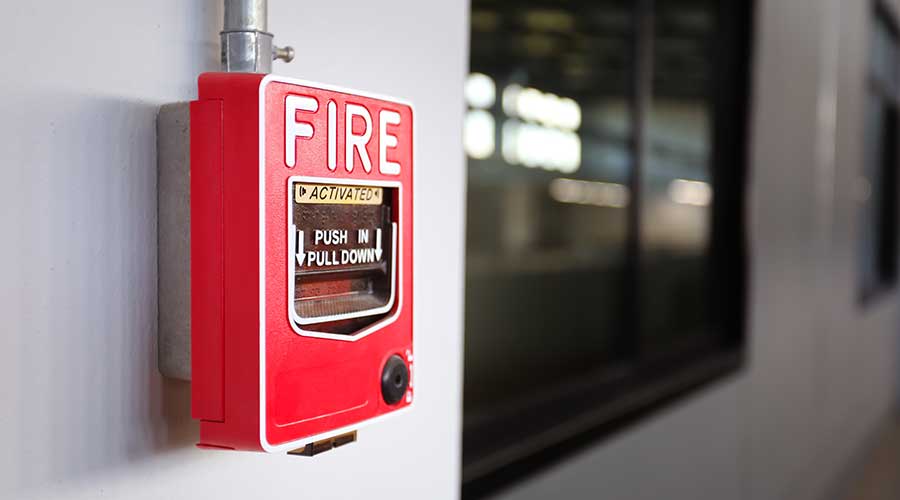There are a few choices to make when it comes to fire sprinklers and alarms. Some types may be better suited for other facilities than hospitals. In this manufacturer roundtable, Healthcare Facilities Today speaks with leading fire alarms and sprinklers manufacturers about what fire sprinklers and alarms are the best fits for hospitals.
What are the best types of fire sprinklers for hospitals?
“The most reliable and effective fire sprinkler system for a hospital environment is a wet pipe fire sprinkler system. Sprinklers should be standard spray control mode sprinklers with quick response operating elements. Properly designed, installed, and maintained wet pipe sprinkler systems have a long-standing history of reliability and effective fire control. Unique areas of a healthcare facility might require specialty fire sprinklers as designed by a fire protection engineer.”
—Donald Hopkins, Jr., vice president of process improvement, Jensen Hughes
“In hospitals, the fire protection focus is on life safety and continued operations. Little disruption to patient care and downtime of equipment is critical. As most patients are incapable of self-evacuation, hospitals typically employ a defend in place strategy to reduce the number of patients that need to be moved in an emergency. Therefore, utilizing pendent quick response sprinklers is essential for controlling the fire quickly, mitigating impact to other areas.
One area-specific sprinkler for hospitals is the Tyco RFII-MRI non-magnetic sprinkler, which was designed to be able to withstand twice the magnetic strength of MRI machines, making it a great sprinkler for use inside MRI rooms.
In parts of the country where hospital fire protection is run off a limited water supply, alternative protection schemes, like water mist, can be approved by the authorities having jurisdiction. The lower flow rates of water mist fire protection can help to minimize the fire system demand and allow the use smaller diameter piping. If a water mist system is approved by the AHJ, the smaller diameter piping can be a great benefit for retrofit or expansion projects, as it takes up less space.”
—Emily Martin, lead technical instructor, Johnson Controls
What are the best types of fire alarms for hospitals?
“The best practice for all hospitals, and other healthcare facilities, is to provide a voice fire alarm system, known as an Emergency Voice Alarm Communications System (EVACS). By providing a voice fire alarm system, specific voice evacuation or relocation messages can be sent to one, several, or all areas of the healthcare facility. In healthcare facilities, often a “private mode” fire alarm system is provided in compliance with NFPA 72, which provides for specific, often coded, messages to facility staff to take needed emergency action in protection for the occupants and patients within their care.
Most hospitals use the best, and most modern, fire alarm system components. This includes the use of addressable and even multi-criteria smoke detectors so that nuisance alarms are reduced or even completely eliminated. This reliability is critical in these facilities and helps both staff and occupants know that any fire alarm is treated as a real emergency event.”
—Larry Rietz, vice president and global service line leader for fire detection and alarm, Jensen Hughes
Jeff Wardon, Jr. is the assistant editor for the facilities market.

 Building Sustainable Healthcare for an Aging Population
Building Sustainable Healthcare for an Aging Population Froedtert ThedaCare Announces Opening of ThedaCare Medical Center-Oshkosh
Froedtert ThedaCare Announces Opening of ThedaCare Medical Center-Oshkosh Touchmark Acquires The Hacienda at Georgetown Senior Living Facility
Touchmark Acquires The Hacienda at Georgetown Senior Living Facility Contaminants Under Foot: A Closer Look at Patient Room Floors
Contaminants Under Foot: A Closer Look at Patient Room Floors Power Outages Largely Driven by Extreme Weather Events
Power Outages Largely Driven by Extreme Weather Events